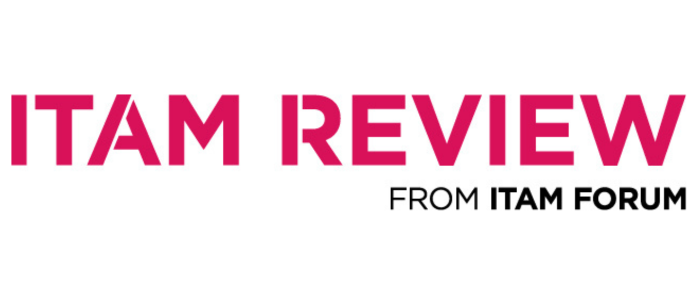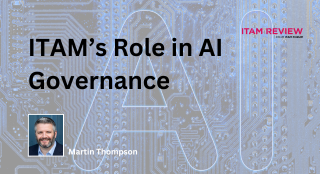SAM Tools are useless without people and processes!

Wrong tool, right idea
It’s a fact. Tools are useless without people, just like a hammer is a pointless instrument without someone actually using it, and a chainsaw is extremely dangerous when in the hands of someone who doesn’t understand how to use it. SAM tools need skilled people and processes to make it effective and an asset to any organisation.
Have you picked a SAM tool yet?
Process Integration
With current ITAM processes in place
It’s great if you already have SAM processes in place, but a complete overhaul may be required to effectively incorporate your new tool into the business. An organisation will need to integrate its SAM tool of choice into its existing ITAM processes, such as;
- Procurement Process
- Software Retirement process
- Disaster Recovery Process
- Software Re-harvesting Process
- Software Change Management Process
- Corporate Governance Process
- Maintain a Supported Software Catalogue
- Software Rationalisation Process
- Joiners, Movers and Leavers Process
- Scope Verification Process
- Named User Verification Process
- Platform Identity Process
This project may not take long, and may only require a slight tweak of the existing processes. If an organisation has all of the above processes in place, then it is likely they have used some form of SAM tool before, and are quite high up on the ! Still, if you have these processes in place without a tool, simply spend some time to incorporate your selected tool into these processes, and make sure you communicate any changes with your key stakeholders and when approved and enforced, end-users.
Without ITAM processes in place
It could be argued that not having existing SAM, ITAM or Procurement processes in place makes the integration of a new SAM tool easier as you can build the processes around the tool. However, it is a lot more work should an organisation not already have any processes in place. SAM/ITAM processes need to be created around the SAM tool during the implementation process. It is of vital importance that any and all IT- or asset-related processes consider and mention the SAM tool to ensure you are optimising it’s usage and to help with your ITAM maturity level.
User integration
Your tool could be considered useless if your users don’t know how to use it. Education and communication is an important factor at this stage. Providing either internal or external education on the tool will be required to ensure that users know all about the tools features and capabilities.
Tool Vendor or MSP support
When negotiating your agreement with the tool vendor or managed service provider, make sure you factor in on-site training days for your users. That way they get a 1:1 day with someone who (should) know the tool inside out, who should be able to show you all of its features and capabilities first hand. This will also give you the chance to ask them about any issues you may be having, or have previously experienced when implementing a SAM tool. Also remember that if you purchase support and maintenance, the vendor will be able to offer you advice and support throughout the length of the agreement. This is worth having, as at some point you will likely need help! Some tool vendor’s support is questionable, so if you are still having issues then you can network on LinkedIn with others that use the same tool.
Internal Communication and Education within the organisation
Organisations need to communicate with their users the fact that they have a new SAM tool in place. The business is now in a position to optimise their software licenses, monitor usage and have better control over their software assets, and that’s a fact that all users within the organisation need to be aware of. This will help with future internal software reviews (audits) and also help users understand how the SAM/IT Team know what software they use and what their usage stats are. As mentioned previously, communication is also required for any changes in processes that are as a result of the implementation of a SAM tool.
Hand-in-hand with communication is education. Users that will be using the SAM tool need to be educated to a high standard so they can utilise the tools capabilities and know its features inside out. Vendors provide training courses for their solutions, but you can also provide internal training. Speaking from experience, what works well are ‘Tool Workshops’ where the most experienced and knowledgeable tool users hosts a number of video sessions with users. An expansion of this is to record ‘How To’ videos for all users and put it on the intranet. This will help combat the SAM or IT Manager spending a lot of their time answering questions on the tools features.
Miss-management
Not using your SAM tool can result in some pretty serious consequences. Apart from being a waste of money, you could be threatening your compliance position and overall mismanagement of software. Miss-management can result in bad data and subsequent miss-management of software licenses; this in turn can affect compliancy. If an organisation is not managing their tool properly, and the tool is part of the ITAM/SAM/Procurement processes then licenses may go missing, be allocated to the wrong user/computer/server/cost centre, or even worse not entered correctly into the tool. The auditors are unlikely to give an organisation any leeway just for having a tool in place!
Another issue with miss-management is the fact that the tool could report incorrect data. If the organisation hasn’t configured the tool properly it may not report back accurate data, which again makes it pretty useless. Having regular health checks or consultations with your SAM tool vendor may be worthwhile to ensure that everything is technically sound. If you have the internal resources to check, then brilliant, just make sure the user in question knows exactly what they are doing!
Finally, the SAM tool is a powerful thing, with a lot of sensitive data recorded in it. Be wary of who has admin rights or even access to the tool, as you don’t want the information to end up in the wrong hands. Have an approval policy in place for access to the tool, and the ability to edit data within it. For example, giving access to an IT Contractor who is only there for 6 months could be dangerous as they could leave the organisation on bad terms and report the tools data and any under-licensed software instances to the likes of the BSA or SIIA.
Having a tool isn’t the be-all-and-end-all!
Having a tool is great, and realistically you can’t run a successful SAM program without one. However, simply getting the tool isn’t the end of the story. As I’ve mentioned throughout this article it is of critical importance to ensure that the tool is utilised and properly managed. A number of organisations think that by having a SAM tool that they are successfully ‘doing software asset management’ but as we know this simply isn’t the case.
Personally, I’ve heard stories of organisations having the attitude along the lines of ‘we have a tool in place now, we must be compliant’ or ‘we’ve got a tool, auditors will not audit us’. Both are extremely ignorant and potentially expensive attitudes to have! Think of your tool as a living, breathing object. An organisation wouldn’t hire someone simply because they ‘feel they need it’ to avoid auditors. If you’re hired your performance is monitored and the company tries to utilise your skills. The same approach should be taken with a tool.
Manage your tool correctly and you will reap the rewards!
The ITAM Review is hosting a unique ‘Tools Event Day’ in New York on the 12th May 2015 . This is a great opportunity for ITAM Review readers and end-users to come see ITAM Tools in action, and speak to the tool vendors. You can book your place here. It’s free!
Can’t find what you’re looking for?
More from ITAM News & Analysis
-
Broadcom vs Siemens AG - A Brewing Storm
The ongoing legal battle between VMware (under Broadcom ownership) and Siemens is yet another example of why ITAM goes far beyond license compliance and SAM. What might, at first glance, appear to be a licensing dispute, ... -
Shifting Left Together: Embedding ITAM into FinOps Culture
During one of the keynotes at the FinOps X conference in San Diego, JR Storment, Executive Director of the FinOps Foundation, interviewed a senior executive from Salesforce. They discussed the idea of combining the roles of ... -
Addressing the SaaS Data Gap in FinOps FOCUS 2.1
I recently reported on the FinOps Foundation’s inclusion of SaaS and Datacenter in its expanded Cloud+ scope. At that time, I highlighted concerns about getting the myriad SaaS companies to supply FOCUS-compliant billing data. A couple ...
Podcast
ITAM training
Similar Posts
-
The M&S Cyberattack: How IT Asset Management Can Make or Break Your Recovery
Marks & Spencer (M&S), the iconic UK retailer, recently became the latest high-profile victim of a devastating cyberattack. Fellow retailers The Co-Op and Harrods were also attacked. Recent reports suggest the rapid action at the Co-Op ... -
AI in ITAM: Insightful Signals from the Front Line
During our Wisdom Unplugged USA event in New York in March 2025, we engaged ITAM professionals with three targeted polling questions to uncover their current thinking on Artificial Intelligence—what concerns them, where they see opportunity, and ... -
How ISO/IEC 19770-1 Can Help Meet FFIEC Requirements
In the world of ITAM, the regulatory spotlight continues to intensify, especially for financial institutions facing increasing scrutiny from regulatory bodies due to the growing importance of IT in operational resilience, service delivery, and risk management. ... -
An Introduction to Scope 4 Emissions
Executive Summary For ITAM teams, sustainability is a core responsibility and opportunity. Managing hardware, software, and cloud resources now comes with the ability to track, reduce, and report carbon emissions. Understanding emission scopes—from direct operational emissions ...




